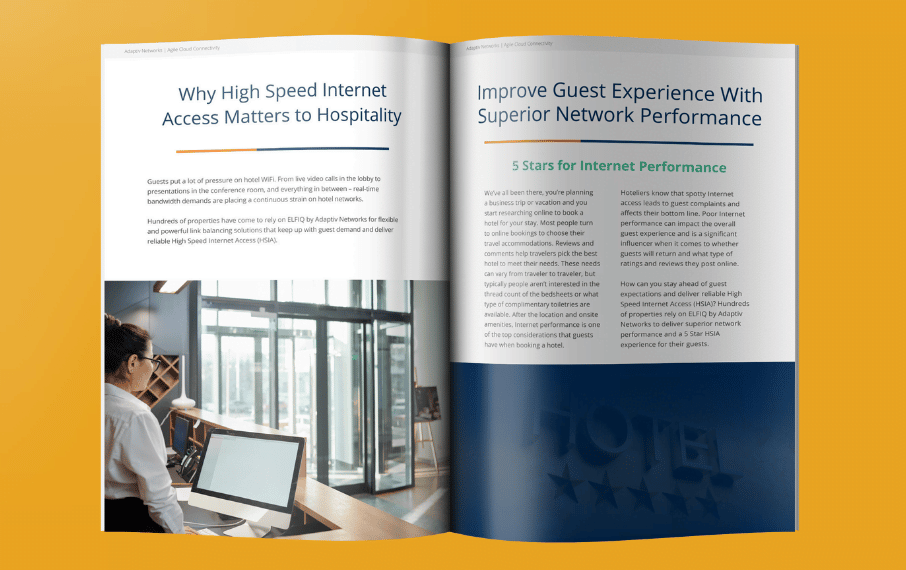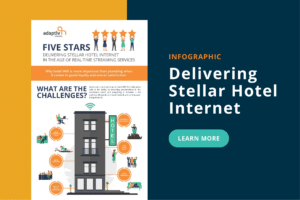Flexibility to Choose the Perfect IP Addressing for Your Network with Adaptiv Connect SD-WAN

Selecting the appropriate IP addressing scheme is crucial for balancing accessibility, security, and cost-effectiveness in modern networking. Within the Adaptiv Connect SD-WAN solution, there are three main IP addressing options: private IP addresses with CGNAT (Carrier-Grade Network Address Translation), public IP addresses NATed in the cloud, and public IP addresses on the LAN side. Each approach has its own advantages and disadvantages, which we will explore in detail to help you determine the best fit for your network.
Understanding IP Addresses
IP Addresses: An Overview IP addresses are unique identifiers for devices on a network, allowing them to communicate with each other. They can be public (accessible over the internet) or private (used within local networks). IP addresses come in two versions: IPv4, with a format like 192.168.1.1, and IPv6, with a format like 2001:0db8:0000:0000:0000:ff00:0042:8329.
Public vs. Private IP Addresses
- Public IP Address: Assigned by internet service providers (ISPs), these addresses are globally unique and allow devices to be accessible from the internet.
- Private IP Address: Used within a local network and not directly accessible from the internet. Common ranges include 192.168.0.0 to 192.168.255.255.
Static vs. Dynamic IP Addresses
- Static IP Address: A fixed, unchanging address manually assigned to a device, essential for servers and devices requiring permanent addresses.
- Dynamic IP Address: Temporarily assigned by a DHCP server, changing periodically to optimize resource use and simplify network management.
NAT and PAT
- NAT (Network Address Translation): Modifies network address information in packet headers to enable multiple devices within a local network to share a single public IP address.
- PAT (Port Address Translation): A variant of NAT that maps multiple private IP addresses to a single public IP by modifying port numbers.
CGNAT and IPv6
- CGNAT (Carrier-Grade NAT): Used by ISPs to conserve IPv4 addresses, allowing multiple users to share a single public IP.
- IPv6: A newer, 128-bit addressing system being rolled out to address IPv4 shortages.
IP Addressing Options in the Adaptiv Cloud
Option 1: Private IP Addresses with CGNAT (Default)
This approach uses private IP addresses within a LAN, translated to a public IP by the firewall using CGNAT. This method is cost-effective and provides robust security, shielding devices from direct internet exposure.
For instance, in an office network, all employee devices use private IP addresses like 192.168.x.x, which are translated to a shared public IP for internet access through CGNAT. This setup ensures secure and seamless remote access via My Connect without exposing devices directly to the internet.
Similarly, a call center might use private IP addresses for its VoIP phones, with CGNAT providing external internet access. Internal communication remains secure and efficient, with remote agents connecting via My Connect for a secure connection to the network. This setup is cost-effective, maintaining high security for internal communications while using private IP addresses.
Option 2: Static Public IP Addresses NATed in the Cloud
This setup maps a static public IP address in the cloud to a device with a private IP on the LAN. It balances accessibility and security, making devices accessible from the internet while still protected.
For example, a web hosting service can assign each client a static public IP address that maps to their private IPs within the cloud. This ensures clients’ web servers are publicly accessible while maintaining security through cloud firewall NAT.
Similarly, a multi-site corporation using a UCaaS platform can assign static public IPs to their internal devices. This setup allows the main server to be accessible from any location via NAT, enabling seamless communication for remote employees using My Connect without exposing devices directly to the internet. This method balances accessibility with security, suitable for businesses with distributed teams.
Option 3: Public IP Addresses on the LAN Side
In this approach, static public IP addresses are configured on the LAN side, making devices directly accessible from the internet. This is ideal for scenarios requiring direct public IP access but comes with higher security risks and costs.
For instance, a gaming company hosting an online multiplayer game might lease a block of static public IP addresses from Adaptiv and assign these IPs to their game servers on the LAN. This direct accessibility ensures optimal performance and reduces complexities associated with double NATing, providing a seamless gaming experience.
Similarly, a telecommunications provider offering VoIP and UCaaS services might lease static public IP addresses for their infrastructure, assigning public IPs to each VoIP phone and UCaaS service on the LAN side. This setup eliminates double NAT issues, ensuring reliable and low-latency communication services. However, it requires robust security measures to protect the network, given the increased vulnerability of having devices directly exposed to the internet.
Summary
Choosing the right IP addressing approach in the Adaptiv Cloud depends on your specific needs and priorities:
- Private IP Addresses with CGNAT: Best for simplicity, security, and cost-effectiveness. Ideal for internal networks.
- Public IP Addresses NATed in the Cloud: Balances accessibility and security. Suitable for internet-facing services.
- Public IP Addresses on the LAN Side: Provides direct accessibility and eliminates double NATing issues, but with higher security risks and costs.
By carefully evaluating the pros and cons of each approach, you can select the one that best fits your network requirements. Not sure which option is best for you? Contact presales@adaptiv-networks.com for expert guidance.
For more information and details, make sure to read our e-book on IP addressing!
 Sébastien Tellier is the VP of Solutions at Adaptiv Networks. Prior to joining Adaptiv, Sébastien worked at Martello and ELFIQ Networks, where he held different positions in marketing and sales in the SD-WAN market. During that time, he appeared on panels and shows in Europe and North America, while working with channel partners across the planet. Sébastien holds a Master of Science in Marketing from HEC Montréal.
Sébastien Tellier is the VP of Solutions at Adaptiv Networks. Prior to joining Adaptiv, Sébastien worked at Martello and ELFIQ Networks, where he held different positions in marketing and sales in the SD-WAN market. During that time, he appeared on panels and shows in Europe and North America, while working with channel partners across the planet. Sébastien holds a Master of Science in Marketing from HEC Montréal.[1] Microsoft, Microsoft Fiscal Year 2023 Third Quarter Earnings Conference Call, https://www.microsoft.com/en-us/Investor/events/FY-2023/earnings-fy-2023-q3.aspx
[2] U.S. Census Bureau, U.S. and World Population Clock, https://www.census.gov/popclock/, accessed on May 07, 2024.
[3] U.S. Census Bureau, U.S. Population Trends Return to Pre-Pandemic Norms as More States Gain Population, https://www.census.gov/newsroom/press-releases/2023/population-trends-return-to-pre-pandemic-norms.html
[4] Flexera, 2024 State of the Cloud Report, https://info.flexera.com/CM-REPORT-State-of-the-Cloud.








